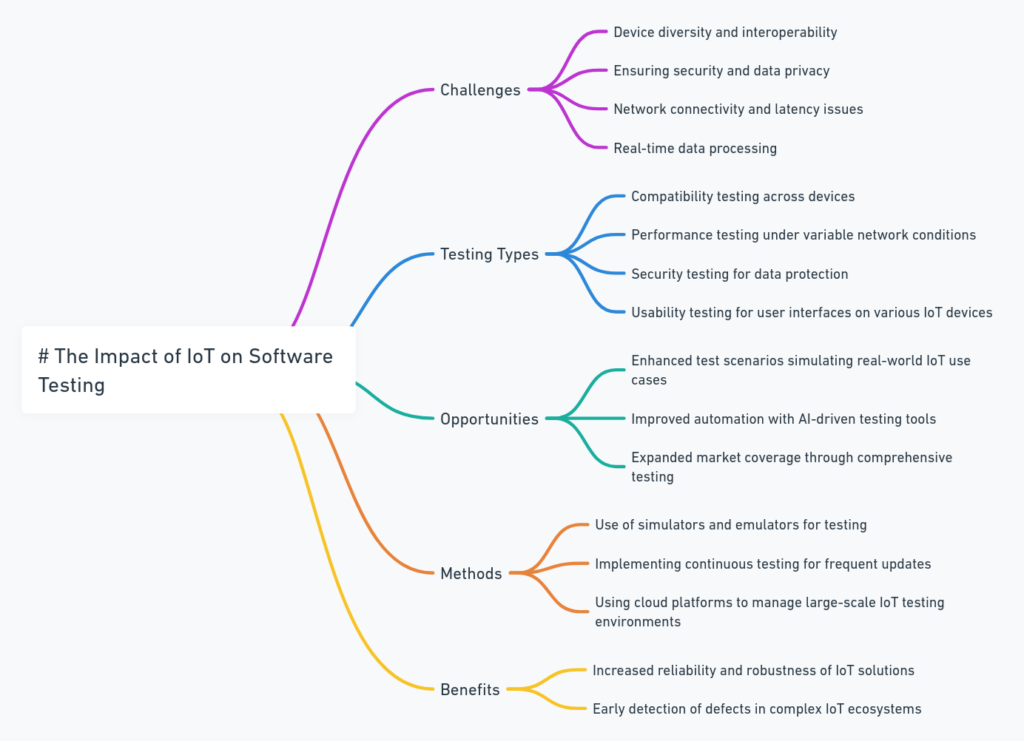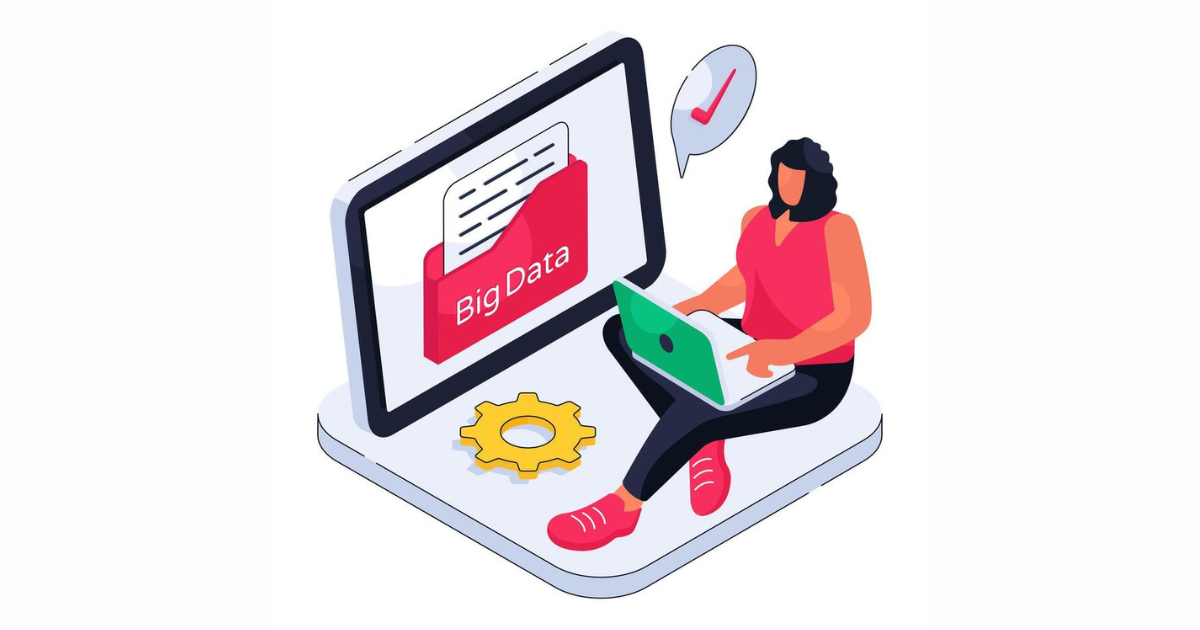The development of Big Data and the Internet of Things (IoT) has revolutionized industries and business model which has made data collection in real-time and analysis a crucial component of the modern world.
As the technology continues to advance and develop the demand for reliable practices for testing software is never more crucial.
From ensuring the accuracy of data to ensuring the scaling of IoT networks Quality assurance (QA) teams have to modify their testing methods to meet the demanding requirements from Big Data and IoT systems.
We'll discuss the ways in which Big Data and IoT are altering the testing environment for software and the needs that arise when testing applications in these areas.
The Impact of Big Data on Software Testing

Big Data refers to large complex data sets of data which are not able to be handled together traditional software for data processing. In many instances, Big Data applications involve processing data from different sources in real-time that requires strong system that can scale.
As companies increasingly rely on data-driven information, ensuring the Big Data systems are both precise and efficient is essential. This is what Big Data impacts software testing:
1. Data Volume and Variety
One of the most distinctive features that distinguishes Big Data is its enormous quantity and diverse types of data (structured as well as unstructured as well as semi-structured).
Software testers need to take into account a variety of data sources when creating test scenarios. It's not suitable to test with only small controlled, controlled data sets.
QA teams need to create tests that use massive, diverse datasets to assure that the software is able to handle the volume of Big Data in real-world applications.
2. Data Accuracy and Integrity
With the increasing quantity and volume of information making sure that data accuracy and integrity are maintained is vital. Any minor oversight in the processing of data could have serious consequences, ranging from inaccurate business data to regulatory concerns.
QA teams should implement testing methods that look for consistency, quality in the data when it is handled by systems.
Artificially-driven testing instruments and automated analysis are used to verify data sources, transformation algorithms, and results of the data in order to warrant that the data is being processed and stored properly.
3. Performance and Scalability Testing
Big Data applications usually require the processing of large volumes of data in real-time which means that the system needs to be scalable to handle the demand.
Traditional tests for performance might not be enough because it usually deals with fixed data sets or predictable tasks. Tests for performance in Big Data systems must simulate the types of high-volume large-scale, high-velocity data flows that the system is likely to encounter during production.
Tests for stress, load and scalability tests must be able to take into consideration the fluctuating characteristics of Big Data applications in order to warrant they are able to handle unexpected surges in demand.
4. Data Security and Privacy
Data protection is a constant major concern, however when it comes to Big Data the stakes are higher. Privacy laws such as GDPR and HIPAA oblige companies to safeguard personal information from breaches and unauthorized access.
QA teams must incorporate Security testing in the process of development cycle to discover weaknesses and vulnerabilities in data protection methods.
This involves testing encryption methods as well as authentication protocols and security controls that assure that the data is protected throughout its entire life.
The Impact of IoT on Software Testing

IoT is the term used to describe the network of physical devices containing sensors as well as software and other technology which connect and exchange information via the internet.
IoT applications are spread across a wide variety of industries, ranging from automotive and healthcare to smart cities and home automation.
As IoT technology improves and the complexity of testing software. Here are the most significant problems that IoT presents for testing teams in QA:
1. Device Interoperability
IoT devices usually require interaction with one another directly or via cloud infrastructure. Testing the interactions between devices and platforms is essential to assure that the system is working exactly as it was intended.
QA teams must verify interoperability among devices to verify that devices made by different companies seamlessly connect to share data and carry out the functions they want to. The testing should be thorough that covers both software and hardware interactions.
2. Network Connectivity and Latency
Because IoT devices depend on connectivity via networks to transmit information and to receive it, the network's performance is an essential element in the seamless functioning of IoT devices.
QA teams are required to test IoT devices in a variety of conditions of the network to determine their performance in various situations, including poor bandwidth, congestion on networks, as well as intermittent connections.
Testing latency is crucial in real-time applications (e.g. healthcare, autonomous vehicles) where the delay of transmission can have catastrophic consequences.
3. Security and Privacy in IoT Systems
Since IoT devices gather huge amounts of data, some of which could be classified as sensitive (e.g. data on health, locations information, etc. ) Security and privacy are the top priorities.
Due to the distributed nature IoT systems is more prone to cyberattacks. Testing software for IoT should focus on safety of both the device, its information, as well as the network.
Testers must verify encryption as well as secure communication protocols and authentication mechanisms for users to protect sensitive information.
Testing for penetration, vulnerability assessments as well as security audits, are vital in identifying weaknesses that could be present prior to deployment.
4. Testing in Diverse Environments
IoT devices are commonly utilized in a range of physical environments, ranging from warehouses and factories to outdoor areas and homes.
This variety of environments makes testing difficult since devices behave differently based on environmental factors like humidity, temperature, and exposed to elements of the physical.
QA teams have to recreate the real-world environment in labs for testing to warrant the durability and reliability of IoT devices.
5. Firmware and Software Updates
IoT devices are usually deployed in the field, and receive updates to firmware or software via remote. QA teams must verify the process of updating to assure that devices are upgraded safely and without issue.
This involves testing backward compatibility, making sure that updates don't introduce new problems with performance or bugs as well as ensuring that the process of updating is flawless and error-free.
How Software Testing Practices Must Evolve for Big Data and IoT
To tackle the unique issues created with the unique challenges posed by Big Data and IoT, the practices of testing software must adapt.
Here are some ways to improve the quality of testing for these fields:
1. Automated Testing and AI-Powered Testing
Due to the massive amount of data as well as complex IoT systems tests performed manually are no longer enough. Automated testing tools which can grow with Big Data volumes and test IoT systems across a vast array of scenarios are vital.
Furthermore, AI and machine learning can be utilized to improve tests, spot irregularities in patterns of data and anticipate failures prior to they happen.
2. End-to-End Testing
In the both Big Data and IoT systems it is crucial to test the whole system from beginning to end, right from the data gathering and storage, to output and processing.
This assists to warrant that all parts work in a seamless manner. End-to-end testing can also help detect issues that might not be obvious in separate components of the system.
3. Continuous Testing and Integration
In the fast-paced world of Big Data and IoT, continuous testing is essential. In integrating testing into CI/CD pipeline, companies can warrant that software updates and newly created data flow are thoroughly tested and offer additional rapid feedback and preventing problems that can occur in the production environment.
4. Simulation and Virtualization
Simulating data flow and interactions between devices within virtual settings is an effective method for testing Big Data and IoT systems.
This lets teams evaluate the performance and scalability of the system in various conditions prior to setting up the system in real environments.
Book a Demo and experience ContextQA platform in action with a complimentary, no-obligation session tailored to your business needs.
Conclusion: The Need for Better Testing Practices in Big Data and IoT
While Big Data and IoT continue to change the face of industries and propel digital transformation, making sure that the high-quality and reliability of systems that run software is now more critical than ever before.
Through the adoption of advanced techniques for testing software including automation of testing and continuous integration and AI-driven data teams can overcome the challenges posed to them by Big Data and IoT systems.
By with the correct approach companies can warrant that their Big Data and IoT applications are safe as well as scalable and work effectively in real-world environments and ultimately ensuring the success of digital technology.
Also Read - The Rise of Codeless Testing Tools: A New Era for Test Automation
